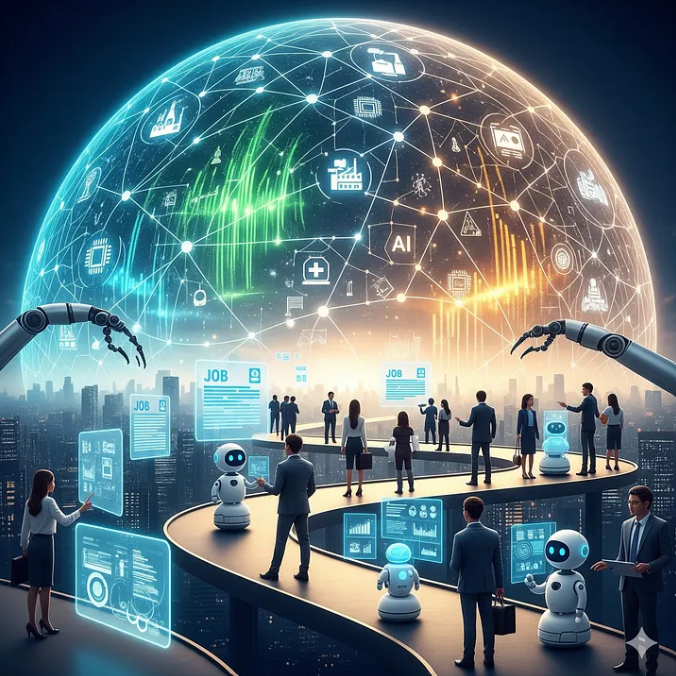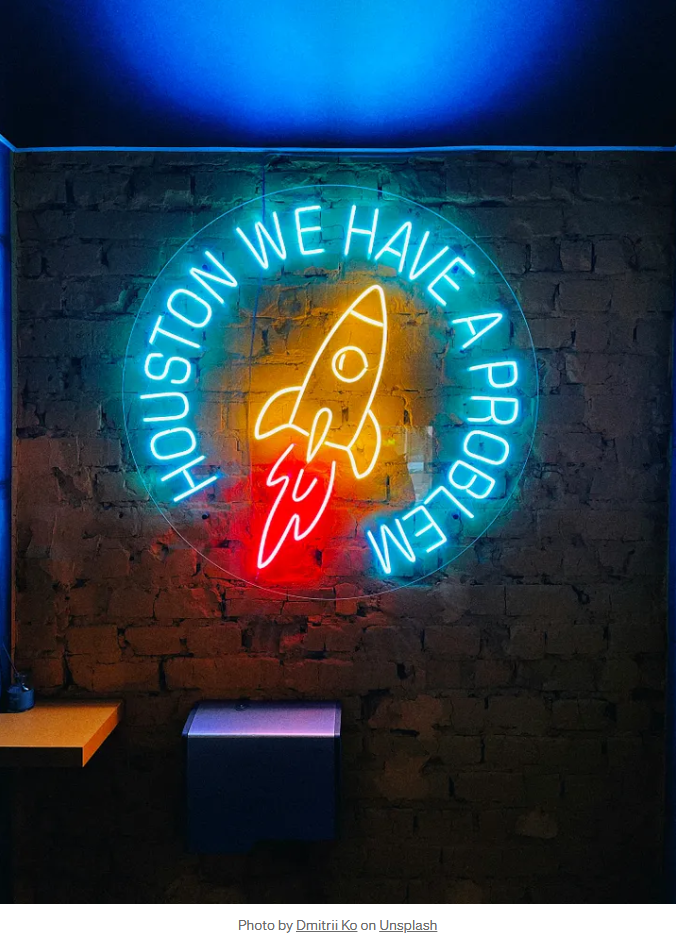.svg)

Addressing The State of the Job Market Today
Recently, two articles have been published highlighting the poor state of the job market today. First, The Atlantic published an article providing an account of an individual applying for, and being rejected from 200 jobs, highlighting the fact that many applying for jobs use AI tools to do so, while many of the organizations they are applying to also use AI to assess them at least to some degree. Second, the Washington Post published a more general article indicating that more than a quarter of workers without jobs have been unemployed for at least half a year (a post-pandemic high).
The first article leads one to pose the question, where is the person in all this?
The second article leads to the takeaway that we are headed down a dark path when it comes to employment.
Alternatives to Begin Fixing This State of Affairs
To address these issues, candidates need to fundamentally change their approach to job-seeking. Meanwhile, those in charge of hiring in organizations (from the C-Suite all the way down to hiring managers) need to consider alternative means of both building and using AI for hiring purposes. For the purposes of today’s post, I will focus on the latter.
Organizations: Building AI Into Hiring Systems
To build AI hiring systems that improve outcomes for both candidates and the organization, companies need to shift their focus from mere automation to responsible, human-centered design. This involves not just integrating AI, but fundamentally changing how these systems are conceived, developed, and deployed.
- Prioritize Explainable AI (XAI): Organizations must move away from “black box” AI systems whose decision-making processes are opaque. Instead, they should build or invest in Explainable AI (XAI). How it works: XAI provides a clear, understandable rationale for why a candidate was shortlisted, ranked, or rejected. Instead of just giving a score, it would show, “This candidate was ranked highly because they have three years of experience with Python and machine learning, which aligns with the top requirements for this role.” Benefits for Candidates: This transparency builds trust. A candidate who is rejected can understand what skills or experiences they were missing, which provides valuable feedback and reduces the frustration of a “black-hole” application experience. Benefits for Organizations: It allows hiring managers to trust the AI’s recommendations and to justify their decisions to both candidates and internal stakeholders. It also helps companies meet legal and regulatory requirements, which mandate bias audits and transparency for AI in hiring.
- Build for Human-AI Collaboration: AI should be designed as a tool to augment human decision-making, not replace it. The system’s architecture should encourage, not discourage, human oversight. How it works: The AI system should be designed with mandatory “human-in-the-loop” checkpoints. For example, after an initial resume screen, a human recruiter must review the AI’s top recommendations. The system should also make it easy for recruiters to provide feedback to the AI (e.g., “This was a great match” or “This was not a good fit”), which helps the AI learn and improve over time. Benefits for Candidates: This ensures that the final hiring decision is based on a holistic assessment that includes soft skills, cultural fit, and personal rapport — factors that an AI cannot fully assess. It prevents qualified candidates from being unfairly screened out due to an algorithmic error or an inability to communicate their full potential through a resume. Benefits for Organizations: This hybrid approach combines the speed and efficiency of AI with the nuance, empathy, and strategic thinking of a human. It frees up recruiters to focus on building meaningful relationships with candidates and ensures that critical decisions are not made by an unthinking machine.
- Integrate Candidate Experience as a Core Metric: Beyond efficiency, the AI system’s success should be measured by its impact on the candidate experience. How it works: Organizations should build features that improve the candidate journey, such as AI-powered chatbots for instant Q&A, automated interview scheduling that respects a candidate’s time zone, and personalized communication at every stage. They should collect feedback from candidates directly and use it to refine the AI system. Benefits for Candidates: A good AI system makes the hiring process feel faster, more transparent, and more respectful. Candidates feel valued when they receive timely updates and can easily get their questions answered, even outside of business hours. Benefits for Organizations: A positive candidate experience enhances the employer brand and can be a competitive advantage in attracting top talent. Even for rejected candidates, a positive experience can turn them into brand advocates, who may apply again or refer others.
Organizations: Using AI in Hiring Systems
Organizations should change their use of AI hiring systems by shifting their focus from purely transactional automation to a strategic, human-centered (relational) approach. The goal is to leverage AI’s power for efficiency while ensuring the process remains fair, transparent, and focused on building positive relationships with candidates.
- Augment Human Judgment, Don’t Replace It: Instead of using AI to make final decisions, organizations should use it to provide insights and streamline workflows for human recruiters and hiring managers. Change in Use: Rather than an AI tool rejecting candidates automatically, use it to score candidates in a manner that identifies those candidates that do not stand a chance of obtaining a job. One example might include using AI to score candidates and drop the lowest third of candidate scores. In this way, the bottom third of candidates do not waste their time. Benefits for Candidates: This prevents qualified candidates who may have no chance of obtaining a job from wasting their time or waiting on a positive response that is not coming. Benefits for Organizations: This frees up resources to focus on further assessment of those candidates who do stand a chance at the job.
- Prioritize Transparency with Candidates: Organizations should be open and honest about when and how they use AI in their hiring process. Change in Use: Clearly state in job descriptions and on career pages that AI is used for tasks like resume screening or scheduling. When communicating with candidates, be specific. For example, “Your application is being reviewed by an AI-powered system to ensure a fair and consistent evaluation of skills.” Benefits for Candidates: Transparency builds trust and reduces the “black box” feeling of a hiring process. Candidates feel respected when they understand how their application is being handled and what to expect. Benefits for Organizations: This proactive communication enhances the employer brand, making the company seem more modern, trustworthy, and respectful of candidates’ time and effort. It also helps meet legal and ethical standards for AI use.
- Integrate AI into a Holistic Candidate Experience: AI should be used to support and enhance the entire candidate journey, not just the initial screening. Change in Use: Beyond resume filtering, use AI to improve communication and scheduling. For example, a chatbot can provide instant answers to frequently asked questions, and AI-powered scheduling tools can allow candidates to book interview slots that work best for them without any back-and-forth emails. This is a much better use of AI than relying on it for high-stakes decisions. Benefits for Candidates: A seamless, responsive, and easy-to-navigate hiring process creates a positive impression. Candidates feel more in control and respected, even if they don’t get the job. Benefits for Organizations: A positive candidate experience is a powerful recruiting tool. It helps attract and retain top talent and can turn even rejected candidates into brand advocates who refer others in their network.
Where Do I Go to Get My Organization On the Right Track?
Admittedly, the above can be considered quite a lot to bite off for organizations as they struggle to maintain operations in these economic times and those ahead. Thankfully, options do exist such as Scoutr (www.scoutr.team) that not only provide training but also the necessary methodology and technology to help organizations survive and even thrive as they forge ahead.
Latest Articles
Interviews. Applications. Candidate recruiting. Employee onboarding. The world of recruiting has no limit. Start with our blog if you don’t know where to begin.




